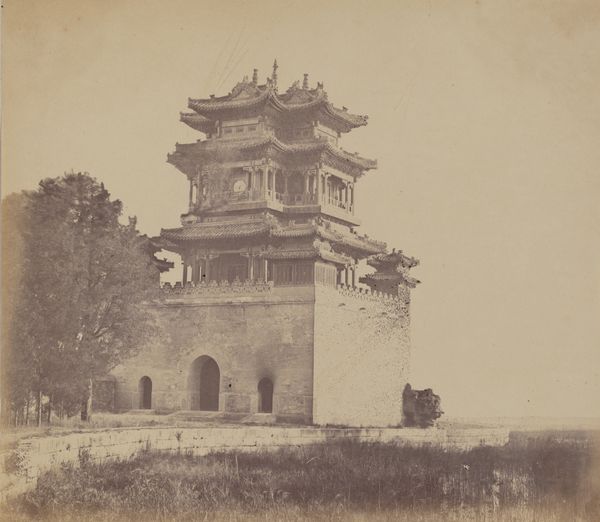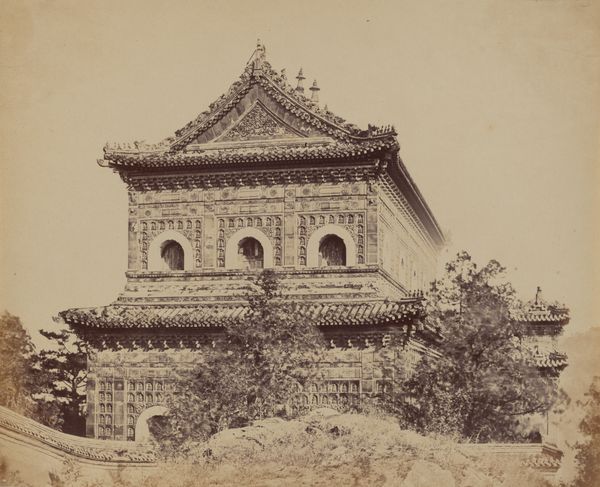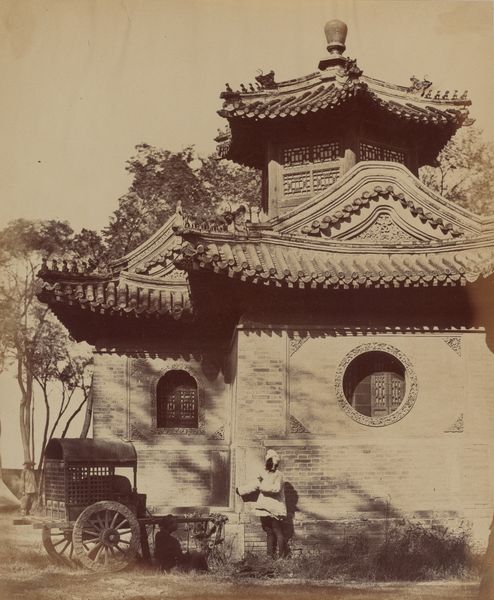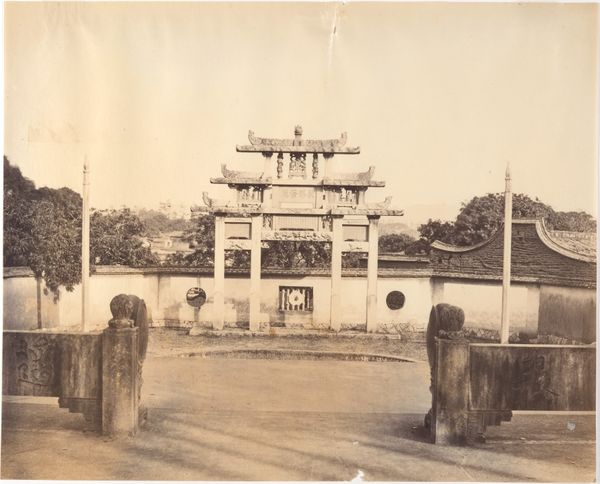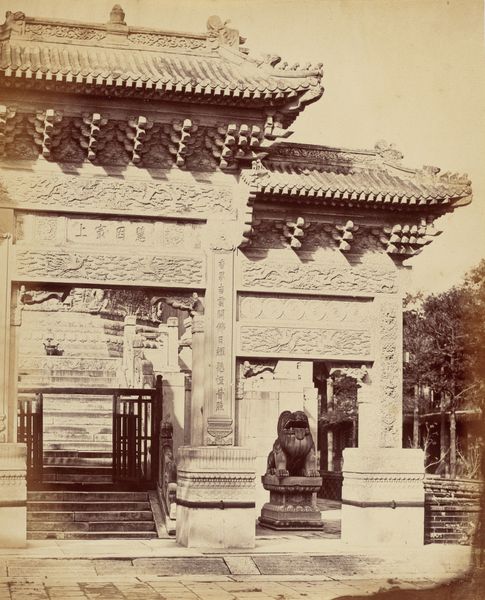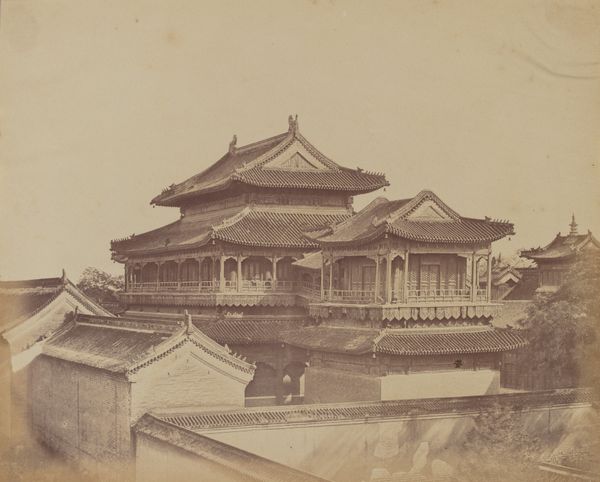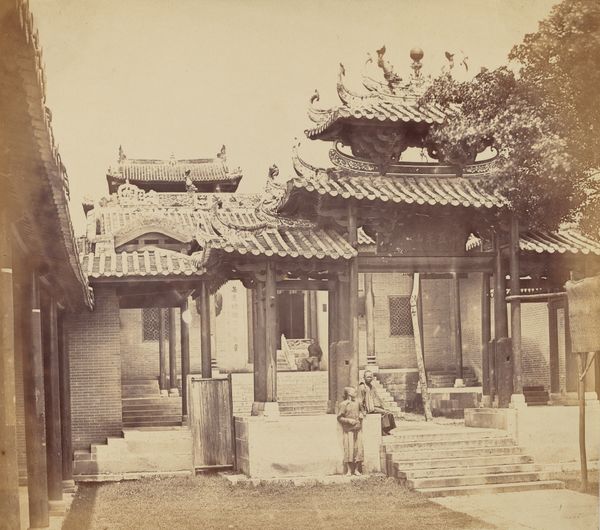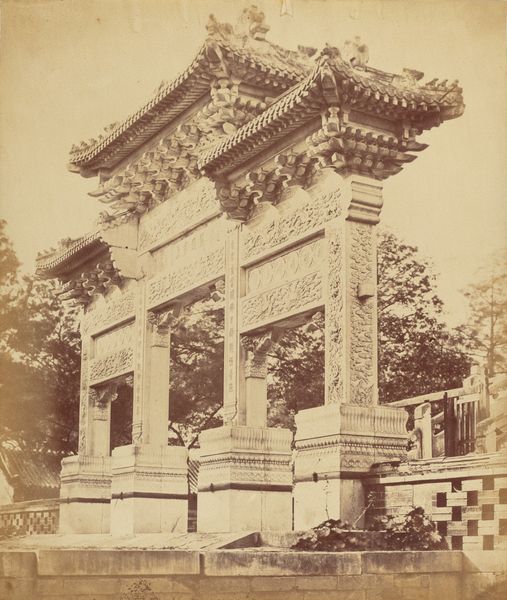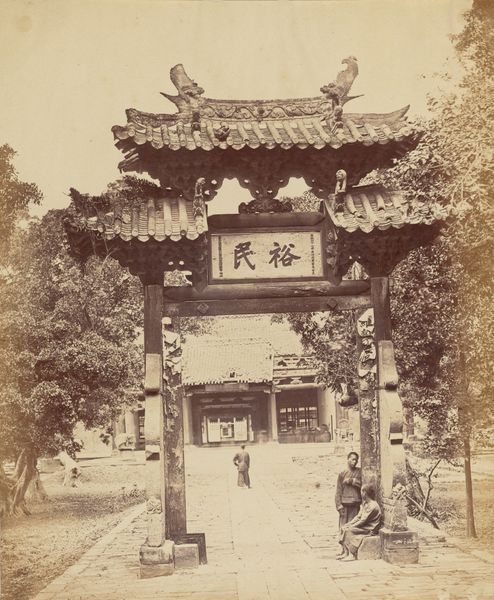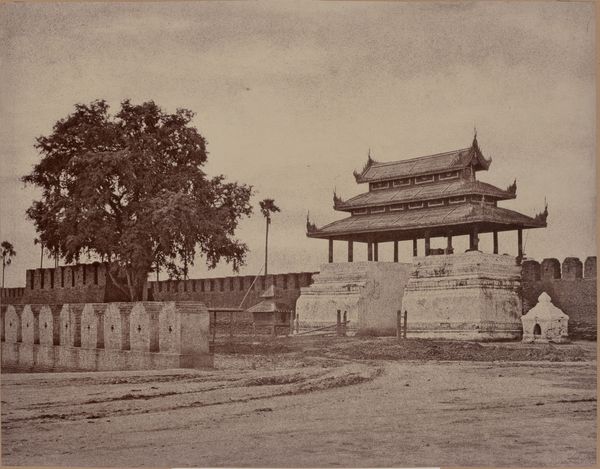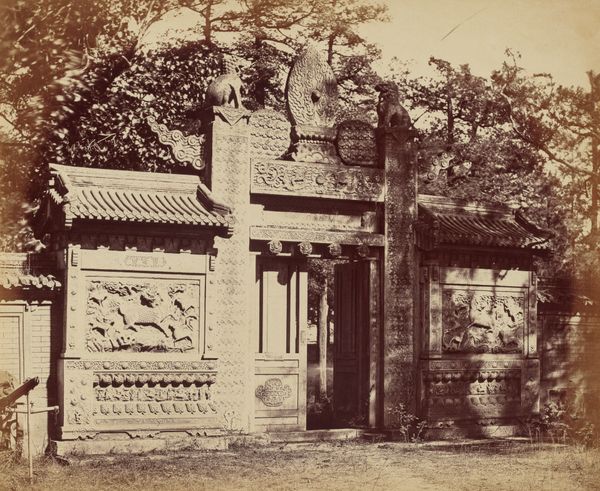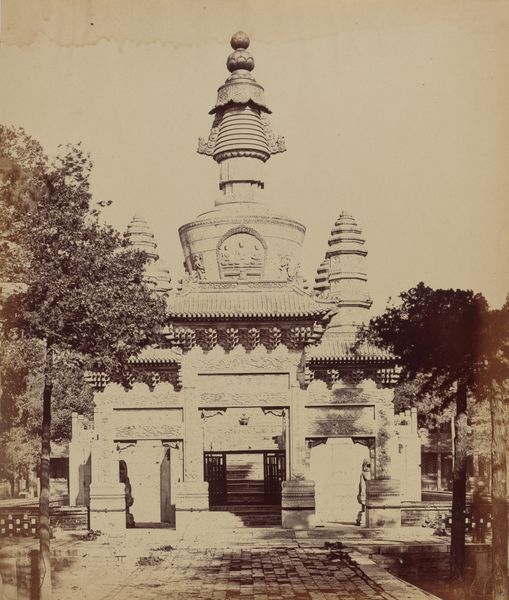
The Great Imperial Palace Yuen Min Yuen, Pekin, Before the Burning, October 18, 1860 1860
0:00
0:00
photography, albumen-print
#
aged paper
#
toned paper
#
asian-art
#
landscape
#
photography
#
orientalism
#
history-painting
#
watercolor
#
albumen-print
Dimensions: image: 24.7 × 28.9 cm (9 3/4 × 11 3/8 in.) mount: 25.1 × 30.9 cm (9 7/8 × 12 3/16 in.)
Copyright: National Gallery of Art: CC0 1.0
Editor: Here we have Felice Beato’s albumen print, "The Great Imperial Palace Yuen Min Yuen, Pekin, Before the Burning, October 18, 1860." The sepia tones give it such an antique feel. What stands out to me is the incredible detail of the pagoda's architecture. How do you interpret this work in the context of history and politics? Curator: This photograph is incredibly powerful. Beato wasn't just capturing a landscape; he was documenting a moment pregnant with colonial violence. Consider the title. It points to the impending destruction of the Yuen Min Yuen by British and French troops. This isn't a neutral depiction; it's a photograph loaded with the weight of imperialism and cultural erasure. What do you think about Beato's position as an observer in this historical context? Editor: I hadn't thought about Beato’s role that way. It’s unsettling to realize he’s essentially a witness for the colonizers. Do you see an element of orientalism at play here, maybe romanticizing the "exotic" just before its destruction? Curator: Absolutely. The aesthetic beauty, the “aged paper” feel you mentioned, that all works to distance the viewer from the brutal reality. The detail almost fetishizes the architecture while obscuring the violence inflicted upon the Chinese people and their cultural heritage. How does acknowledging the impending destruction change how we engage with the image? Editor: It forces you to think beyond the surface beauty. It becomes a visual representation of power and loss. It’s almost like a ghost story, capturing a fleeting moment before something vanishes forever. Curator: Precisely! And by grappling with that discomfort, we can begin to deconstruct the orientalist gaze and understand photography’s complex relationship with power. Editor: This conversation really shifted my perspective on the photograph. Thanks! Curator: Mine too, it's important to acknowledge whose narrative we are seeing, or not seeing.
Comments
No comments
Be the first to comment and join the conversation on the ultimate creative platform.
